If you’re a cat owner, you’re probably already familiar with the importance of monitoring your cat’s poop. While it may seem like an unpleasant task, it can tell you a lot about their health – as your vet has probably already told you!
Understanding what’s normal and what’s not when it comes to cat poop can help you to identify potential health problems early on and ensure that your cat stays healthy.
In this guide, we’ll take a closer look at cat poop and what it can tell you about your cat’s health, including what normal cat stools looks like and what to watch out for when it comes to abnormal poops.
We’ll also explore some of the most common cat stool problems, as well as what we can do to maintain healthy bowel movements and prevent problems. Let’s get started!
In This Article
- Significance of cat poop
- Cat stool chart
- What’s normal & what’s not
- Understanding cat diarrhea
- Understanding cat constipation
- Blood in cat poop
- Behavioral cues
- Cat urine
- Maintenance & prevention
- When to see a veterinarian
- Emergency situations
- FAQs
The Significance of Cat Poop
Your cat’s poop contains a goldmine of information about their health. Healthy stools are a simple yet strong sign that your cat is in good health, but there are a few abnormalities to look out for that can suggest otherwise.
Different abnormalities can even point you in the direction of specific problems, especially in regard to gastrointestinal health. This is why vets often ask about your cat’s poop at check-ups.
Vet-Approved Cat Stool Chart
Cat stool charts, often referred to as fecal scoring charts, are a valuable tool in this process, aiding in the interpretation of your cat’s stools characteristics. Feel free to use our vet-approved stool chart to interpret your cat’s poop.
Cat poop is often categorized into various types:
- Hard and Dry: The stools are hard, dry, and often appear in small, separate nuggets, similar to rabbit droppings.
- Firm but Not Hard: Firm but not too hard, maintaining a tubular shape. They should be easy to pick up and not leave much residue behind.
- Log-Shaped but Soft: Softer and more moist. They maintain their shape but may have a softer texture and are not as firm to the touch.
- Soft and Unformed: Lack a distinct shape and are much softer, indicating an increase in moisture content.
- Watery: The stools are liquid, without any solid form, and indicate a significant digestive upset.
Cat poop can also be categorized into various colors:
- Brown (Normal): Healthy cat poop is generally a medium to dark brown color. Brown feces indicate a normal digestive process. The exact shade can vary based on diet.
- Mucus or Blood: The presence of mucus or blood in any type of stool is concerning and warrants veterinary attention. Mucus can appear as a jelly-like substance and can indicate inflammation, while blood may be bright red or dark and tarry, indicating bleeding at different locations in the gastrointestinal tract.
- Black or Very Dark Brown: Bright red streaks in poop usually suggest fresh blood, which could be due to lower gastrointestinal bleeding, like in the colon or rectum. This can be caused by conditions like colitis, constipation, or anal gland issues.
- Green: Green stools can be caused by eating a lot of grass or plants, but they can also indicate gall bladder issues, especially if the poop is also very loose.
- Yellow: Pale, yellowish poop can be a sign of a liver issue or biliary disease. It can also appear in cases of rapid transit through the gastrointestinal tract.
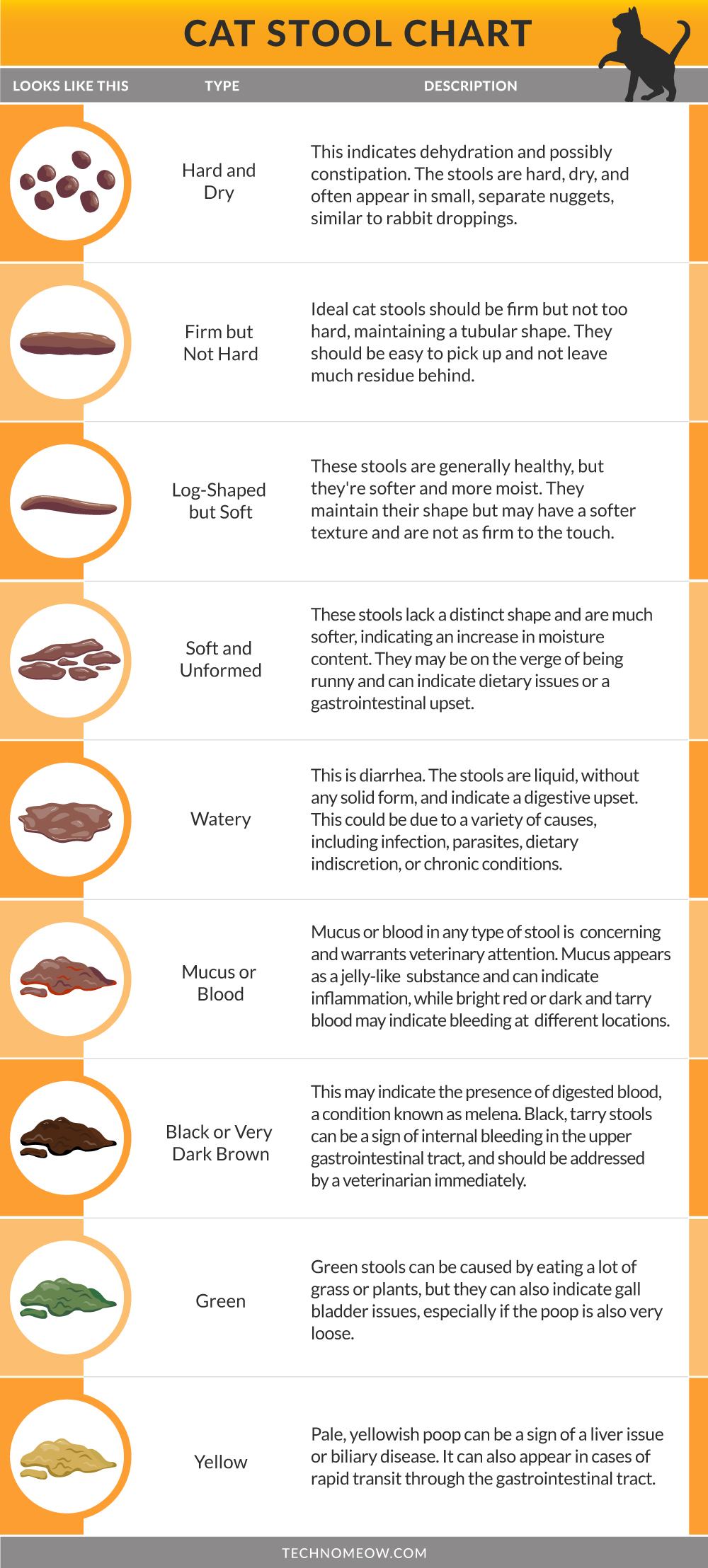
What’s Normal & What’s Not
As a cat owner, it’s essential to understand what’s normal and what’s not when it comes to your cat’s poop.
By paying attention to the following things, you can better understand what’s going on in their bodies and detect potential problems.
If you notice any changes in your cat’s poop that persist for more than a day or two, it is best to consult your vet. This is especially true if the changes are accompanied by other signs or symptoms.
Color
Normal cat poop should be brown or dark brown in color. If you notice any other colors, it could be a sign of a health issue. For example, black poop could indicate that your cat is bleeding internally, while red poop could indicate bleeding in the lower digestive tract. Yellow poop can be a sign of liver or gallbladder issues, and green poop could be a sign of a dietary issue or infection. See cat stool chart above for details.
Consistency
The consistency of your cat’s poop is also important. A normal cat poop should be firm, but not too hard. It should be malleable, similar to modeling clay. If it is too hard and dry in consistency, it could be a sign of constipation, while if it’s too soft and watery, it could indicate diarrhea.
Shape
The shape of your cat’s poop can give you clues about their health, as well. A normal cat poop should be shaped like a sausage and appear segmented. If the poop is too hard or too soft, it may not hold its shape, which could indicate a problem.
Smell
Finally, the smell of your cat’s poop can also give away clues about their health. Normal cat poop should have an odor, but it shouldn’t be too overwhelming. If it smells exceptionally foul, it could indicate a problem with your cat’s digestion.
Frequency
The frequency of your cat’s poop can vary depending on their diet and other factors. However, if you notice a sudden change in frequency, it could be a sign of an underlying health problem, such as constipation.
Understanding Cat Diarrhea
As mentioned above, if your cat’s poop is watery, loose, or has a foul odor, they may have diarrhea.
Sub-types of cat diarrhea:
- Small Intestinal Diarrhea: Larger pools of loose feces, passed less frequently, can contain darker, “tarry” blood.
- Large Intestinal Diarrhea: Smaller amounts of loose feces, passed more frequently, often with a sense of urgency, and can contain streaks of mucus and fresh blood may be visible.
Diarrhea is a common problem in cats and can be caused by various things such as stress, diet, allergies, parasites, infection, or disease. It’s important to note that diarrhea is normal in young kittens and oftentimes older cats, and minor diarrhea once in a while is often nothing to worry about.
However, when it persists for more than a day or is accompanied by other symptoms such as vomiting or lethargy, you should contact your vet. Depending on the cause of the problem, your vet can recommend treatment or lifestyle changes to treat the problem.
Diarrhea can take a toll on your cat’s body, regardless of the cause. To counteract the effects until you can treat the underlying cause, you should make sure that your cat is well hydrated and fed plain, bland food such as boiled chicken or rice to settle their stomach. Let’s take a closer look at the possible causes.
Diet
As mentioned above, your cat’s diet can cause them to have diarrhea. Cats are obligate carnivores, which means they require a diet that is primarily made up of animal protein to survive, so their digestive system is perfectly adapted to this type of diet.
A diet that is too low in protein or a poor quality quiet in general can lead to diarrhea. When shopping for food for your cat, be sure to look for high-quality foods with natural ingredients that are high in animal protein and low in carbohydrates, with plenty of moisture to keep your cat hydrated.
Changes in diet can also cause diarrhea, so if you’re changing your cat’s diet, be sure to do it gradually.

Food allergies
Another diet-related cause of diarrhea is food allergies. Common allergens include proteins such as chicken, beef, or fish, as well as grains like wheat or corn.
Symptoms of food allergies in cats range from gastrointestinal issues like vomiting and diarrhea to skin problems such as itching, redness, or ear inflammation. Identifying the specific allergen is crucial for effective management.
If you suspect your cat of having an allergy to something in their food, talk to your vet about hypoallergenic food or doing a limited-ingredient diet.
Stress
Stress in cats can have numerous causes, such as significant life changes like moving to a new house or loss in the family. Traumatic experiences, phobias, and separation anxiety can also cause ongoing stress, as well as under-stimulation.
Cats may exhibit signs of stress through behavioral changes, such as excessive grooming or aggression, as well as physical through excessive shedding and diarrhea.
Stress caused by lifestyle changes can be relieved by providing a stable routine and lots of love and attention, whilst ongoing behavioral issues can be treated with positive association training and anti-anxiety products. Be sure to keep your cat’s mind occupied to reduce stress and anxiety by keeping them active and stimulating their mind with lots of social interaction and entertaining play.
We highly recommend exercise wheels and challenging toys for indoor cats! If you’re really struggling, consult your vet or a behavioral specialist.
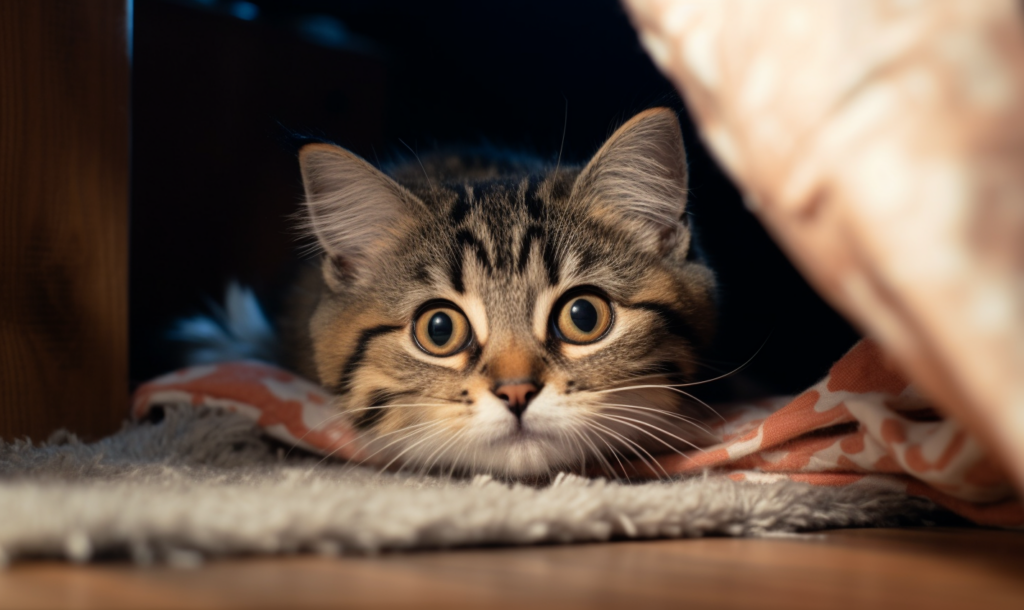
Parasites
Parasites are a common cause of diarrhea in cats. If your cat has parasites, you may notice that their poop also contains blood or mucus. Some of the most common parasites that can affect cats include:
- Roundworms: These are long, spaghetti-like worms that can grow up to several inches long. They can cause diarrhea, vomiting, and weight loss in cats.
- Tapeworms: These are flat, segmented worms that can grow up to several inches long. They can cause diarrhea, vomiting, and weight loss in cats.
- Hookworms: These are small, thin worms that can cause anemia, weight loss, and diarrhea in cats.
- Giardia: This is a parasite that can cause diarrhea and vomiting in cats.
Parasites are treatable through anti-parasitic medications that you can buy online or through your vet, but if you suspect your cat has a parasite problem, consult your vet to see what they recommend. It’s important to keep up with parasite preventatives to stop it from happening again in the future.
Infection
Bacterial infections can also cause diarrhea, especially in vulnerable cats, such as kittens and senior cats. Other symptoms can include lethargy and a decline in appetite and depending on the infection, they may get better on their own or require treatment through veterinary-prescribed meditation.
Disease
Certain diseases can also cause diarrhea. Some of the most common diseases that can affect cats include:
- Inflammatory bowel disease (IBD): This is a chronic condition that can cause diarrhea, vomiting, and weight loss in cats.
- Pancreatitis: This is a condition where the pancreas becomes inflamed and can cause diarrhea, vomiting, and abdominal pain in cats.
- Kidney disease: Kidney disease can cause changes in your cat’s poop and urine.
- Diabetes: This is a condition where the body is not able to regulate blood sugar levels and can cause changes in your cat’s appetite, weight, and poop.
If you suspect your cat has a disease, you should take them to the vet for testing and treatment.
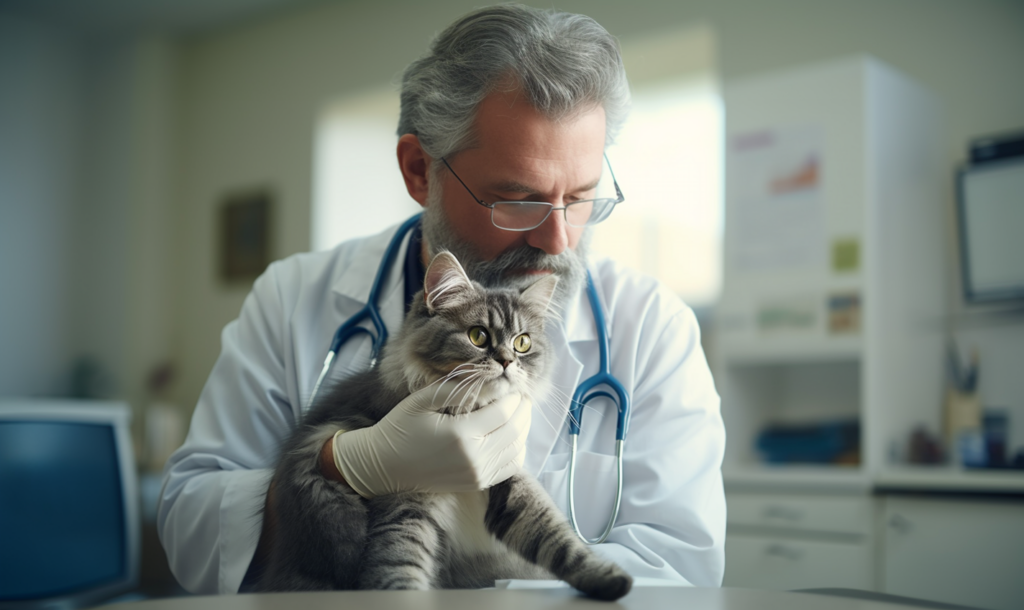
Understanding Cat Constipation
If your cat’s poop is dry, hard, or they are straining to poop, it may be a sign of constipation. If your cat is having trouble pooping, they may be constipated.
Cats have a relatively short digestive tract compared to other animals, which means that food passes through their system quickly, so constipation is particularly abnormal in cats.
It can be caused by various things such as dehydration, diet, or hairballs. It can also have more serious causes. To help your cat cope with constipation until the underlying issue is resolved, you should make sure they are well hydrated. You can also try giving them a natural laxative such as pumpkin puree.
If the constipation persists or is accompanied by other symptoms such as vomiting or lethargy, you should contact your vet. Let’s take a closer look at the possible causes.
Dehydration
Cats are famously bad at drinking water. Dehydration can cause constipation, and in more serious cases, dry or sticky gums, lethargy, sunken eyes, and reduced skin elasticity.
Severe dehydration may require IV fluid therapy or electrolyte supplementation. It can pose serious health risks, including poor kidney function, so it’s important to encourage your cat to drink more.
Testing for dehydration in cats can be efficiently conducted using the Skin Tent Test. This simple yet effective method involves gently lifting the skin at the back of your cat’s neck, specifically between the shoulders, and then releasing it. Observe how the skin behaves upon release: in a well-hydrated cat, the skin will promptly return to its original position. However, if your cat is dehydrated, there will be a noticeable delay in the skin resettling. In extreme cases of dehydration, the skin might not return to its normal state at all.
It’s important to note that this test might not be as reliable in older cats, as they naturally lose some skin elasticity over time.
Diet
A diet that is too high in carbohydrates can cause constipation. It’s also essential to ensure that your cat is getting enough moisture in their diet.
Hairballs
Hairballs are a common occurrence in cats, where loose hair is ingested and accumulates in the stomach from grooming. Symptoms include coughing, hacking, and sometimes, constipation.
They can usually be coughed up, but when they pass through and get stuck in the digestive system, your cat will need a special edible hairball treatment to help them pass it.
They can be bought over the counter, but if it doesn’t help, consult your vet. To prevent hairballs, brush your cat regularly and if they shed excessively, consider if they need a lifestyle change or look into shedding supplements to decrease the amount they shed.
Other possible causes
In more extreme or rare cases, it could indicate a bowel obstruction, a neuromuscular disease, or a tumor. So, be on the lookout for other symptoms and contact your vet if you’re concerned.
Bowel obstruction in cats occurs when their intestines are blocked from ingesting foreign objects like hairballs or string. It can cause inability to poop, as well as pain and lethargy. It requires immediate vet attention to remove the obstruction.
Tumors in a cat’s digestive tract and neuromuscular diseases can also lead to constipation. Other symptoms include weakness and mobility issues and both require immediate veterinary treatment, which could include surgery or supportive care.
Blood in Cat Poop
If you notice blood in your cat’s poop, it can be a sign of various health problems such as infections, parasites, or inflammatory bowel disease.
If the blood is bright red and is only on the surface of the poop, it may be caused by a tear in the anus. If the blood is dark and tarry, it may be caused by bleeding in the digestive tract.
If you notice blood in your cat’s poop, you should contact your vet as soon as possible. Your vet may recommend tests such as a fecal exam or blood work to determine the underlying cause of the blood in the stool.
Other Symptoms & Behavioral Cues
Other symptoms that may indicate an underlying problem with your cat include lethargy and pain or discomfort.
Watch for behavioral changes, too, such as changes in appetite, and odd behaviors when (or before/after) going to the toilet, such as grooming, which may suggest discomfort or abdominal pain.
If you notice any of these signs or symptoms, it is important to consult a vet as soon as possible.
What About Cat Urine?
Cat urine can also be a good indicator of health problems. You can even buy health-monitoring cat litter that uses various health indicators, such as urinary pH levels, which react to your cat’s urine and change color to display abnormalities.
Maintaining Good Health & Preventing Cat Poop Problems
Keeping your cat’s poop healthy requires regular check-ups and proper hygiene. Here are some tips to help you maintain your cat’s poop health.
Food
To keep your cat’s poop healthy, we recommend:
- Wet food: Wet food is an excellent choice for cats because it provides moisture and is easier to digest than dry food. It’s also richer in taste for fussy eaters.
- Raw food: Raw food diets are becoming increasingly popular among cat owners. They are high in animal protein and moisture and can help keep your cat’s digestive system healthy.
- High-quality dry food: If you prefer to feed your cat dry food, look for high-quality brands that are high in animal protein and low in carbohydrates.
Generally speaking, adult cats should eat 1/4 – 1/2 cup of dry food or 3 to 5 ounces of wet food per 5 lbs of body weight per meal and two meals per day, but it can vary according to weight, health, and age, so check with your vet for specifics.
You may also find it helpful to keep your feeding times more consistent by using an automatic feeder for cats.
Water
Make sure your cat always has access to fresh water to help keep them hydrated. They typically need about 60-80 milliliters per kilogram of body weight per day. Water fountains can be super enticing to cats, and adding water to dry foods can help, too.
You can even add some drops of tuna juice to your cat’s water to entice them to drink more or make them a chicken broth. Some cats even like ice cubes, so long as they are safely sized or crushed up.

Hygiene
Proper hygiene is essential to maintain your cat’s poop health. Here are some tips to help you keep your cat’s litter box clean:
- Scoop your litter box at least once a day or use a self-cleaning litter box to prevent bacteria build-up (check out our favorite self-cleaning litter box here)
- Wash the litter box with soap and water once a week to stop the spread of bacteria around your home and between cats
- Provide enough litter boxes, with a minimum of one per cat
- Place it in a quiet, private place in the home
- Use unscented litter to detect abnormal odors and prevent irritating sensitive cats
Regular vet check-ups
Be sure to keep up with annual health check-ups with your vet to monitor your cat’s health and get advice on how best to tailor their lifestyle as they age.
When to Seek Veterinary Help
If diarrhea or constipation lasts for 24 hours, especially in older cats or kittens, it may not mean anything too significant. However, it can point to an underlying problem in adult cats. Prolonged diarrhea or constipation in cats of any age must be evaluated by a vet and can cause problems on their own, such as dehydration.
Black or bloody diarrhea, or anything accompanied by other signs, symptoms, and behavioral changes, warrants a vet visit. They may ask you to bring a sample of their poop before examining them.
The treatment plan will depend on the underlying issue but may include lifestyle changes or medication.
Emergency Situations
In some cases, changes in your cat’s poop may indicate an emergency. If you notice any of the following, seek veterinary care immediately:
- Your cat is not pooping at all
- Your cat is straining to poop but nothing is coming out
- Your cat is vomiting or has a distended abdomen
- Your cat is unresponsive
These signs may indicate a serious problem that requires immediate attention.
Frequently Asked Questions
How often should a cat poop?
Generally, an adult cat should poop at least once a day, but some cats may poop up to three times a day. Kittens, on the other hand, may poop more frequently, up to four times a day. The exact frequency can vary depending on age, diet, and health.
How should healthy cat poop look?
Healthy cat poop should be relatively firm and deep brown in color. It should hold its shape when scooped but shouldn’t be too hard or dry. The size and shape can vary but typically resembles small, log-like segments.
What does black cat poop indicate?
Black cat poop can indicate blood in the stool. This could be due to several reasons, including intestinal parasites, infections, or gastrointestinal bleeding. If you notice black poop in your cat’s litter box, consult your vet as soon as possible.
Why does my cat have smelly poop?
Runny and smelly poop in cats could be a sign of underlying health issues such as infections, dietary changes, or food intolerance, so it’s best to seek veterinary care.
How often should I check my cat’s poop?
You should check your cat’s poop whenever you scoop your cat’s litter box and monitor it more closely if you notice any significant changes.
When should I be concerned about my cat’s diarrhea?
Diarrhea lasting more than 24-48 hours, especially if accompanied by other symptoms like lethargy, vomiting, or changes in appetite, requires veterinary attention as soon as possible.
Why is my cat avoiding the litter box?
Cats may avoid the litter box due to discomfort from cleanliness issues and inappropriate box size, or underlying health concerns. Regular cleaning and ensuring your cat has the right litter box size should solve the issue, and of course, consult a vet if the avoidance persists.
Final Thoughts
In conclusion, understanding your cat’s poop is an essential part of being a responsible cat owner. By checking their poop in their cat litter, you can detect bodily changes early and take action to keep their cat healthy.
To recap, normal cat poop should be firm, moist, and well-formed. It should be brown in color and have a mild odor. Any deviation from this can be a sign of a problem. If your cat’s poop is consistently watery, hard, or has a strong odor, you should consult your vet.
Additionally, it’s important to keep your cat’s litter box clean to prevent the spread of disease and infection. By following these guidelines, you can help ensure that your cat stays healthy and happy.

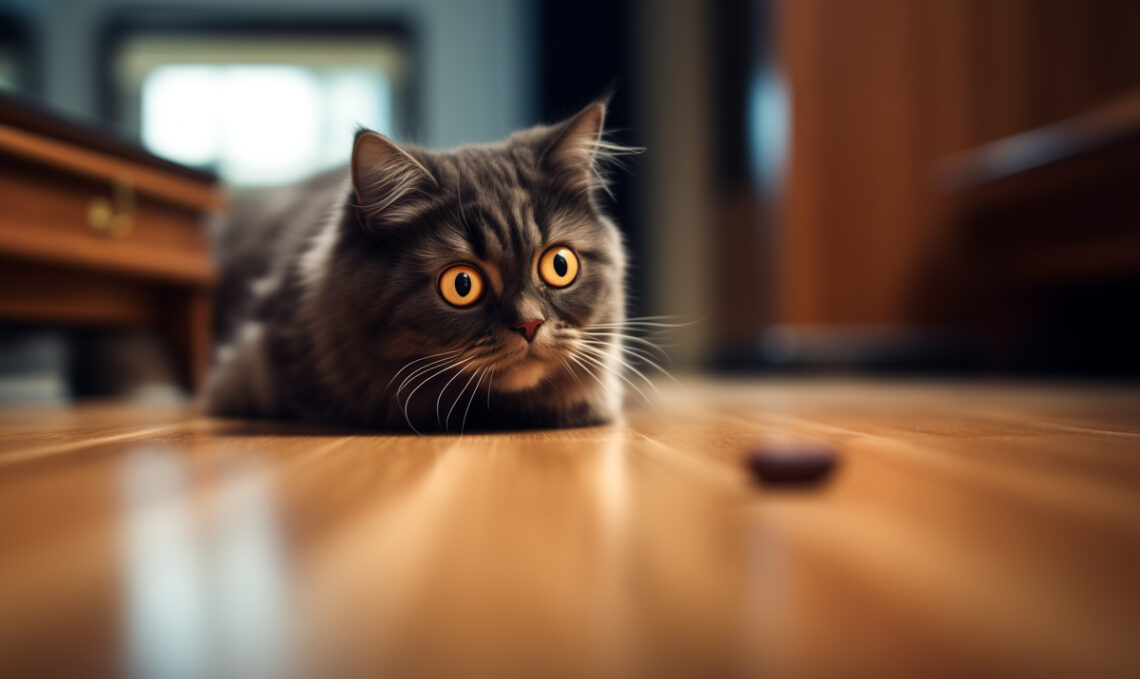


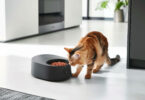






Leave a Comment